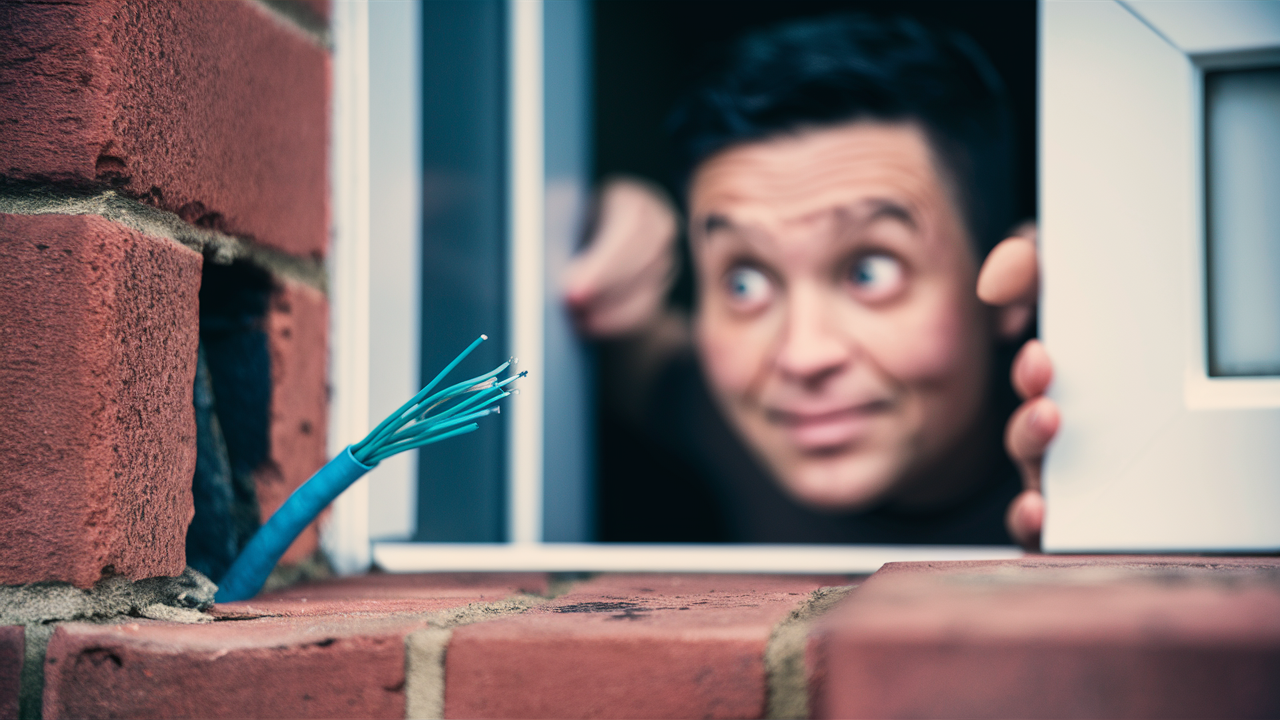Is my house wired for fiber?

Wired for fiber is basically, an optic AT&T Fiber Internet cable that runs to your house or not the decision is made by the company. Fiber optic technology is a system of transmitting data through cables made of long, thin strands of very pure glass instead of our usual wires made from metal. Now let us consider some of the factors to identify whether the fiber connection has been established or not to your house.
Check Around the Exterior
First of all, go to the areas outside of your house, closer to the place where the electric and cable/phone line get into the house, and search for any boxes or cables coming from the ground with a label that says, “fiber optic.” If you have confirmed that fiber has been brought to your house, you will note that there will be an external Optical Network Terminal (ONT) box fixed at the outer side of your house’s walls. This box links the fiber optic cable that runs externally to the inner wiring. If you do not notice a labeled box above the router, that is an indication that fiber connections have not been made.
However, realizing that you don’t spot an ONT box does not necessarily mean no fiber lines in your area. At times, the fiber optic line is directly installed outside and may just pass through the basement or the utility room wall. The next step is to check the internal wiring to see if there is loose wiring or a short in the system.
Inspect Interior Utility Areas
Go down to the basement, crawl space, or wherever utilities and incoming telecommunication cables connect with the house. Examine all the cables and connections to find any sign of fiber optic connection. To be sure that you are looking for the right cables, you need to look for cables with micron dimensions printed on the jacket's outer layer (meaning that there are very thin layers of glass fiber inside), special fiber connectors, or cables with labels containing words such as ‘optical fiber’.
Coaxial copper cable or normal telephone twisted pair line is most times used in most homes to make data connection either directly to the modem or through the wall jacks. If you do not find even these regular wires accompanied by any fiber cabling or parts wherever you look at the house, your house has no direct fiber feed connections at present.
Understand Fiber Layouts
Maybe, fiber cabling is not available yet inside your home, but the internet service can exist near your home, underground. Commonly, telecom firms operate one or more fiber optic ‘‘trunk lines’’ along a street or neighborhood. They also pull out individual fiber cables from this main line over aerial or through ducts up to each customer’s ONT enclosure on the compound.
But they have not yet built the ‘last mile’ to your door, that is, what you see physically of fiber, running right into your home and connecting to your interior wiring. On the bright side, connecting the final fiber splice to homes is relatively easy once again, given that the main tract line has been extended beyond the home.
Speak to your internet service provider
Not yet decided whether fiber is available to you? Call your local internet provider and inquire whether a line of optic fiber runs directly to your given address. Companies such as AT&T Internet, Spectrum, and Verizon have databases containing more information on areas in their network that qualify for fiber internet. They can inform you if your home is capable of fiber connections or if it meets the requirements to be connected soon.
The company can explain if the fiber wiring and connectors are present or if they still need a ‘fiber splice’ from the main line to your house before offering customers the opportunity to acquire higher fiber optic internet plans and speeds. This one call to your provider will save you a lot of guessing regarding your present wiring scenario.
Upgrade Options
However, if there are fibers but the wiring in your home has not been adapted for fiber yet, usually you are going to have to retrofit your internal wiring to support the faster connection that fibers provide. This may involve rewiring the cables, proactively installing new wall outlets or media access panels, incorporating fiber elements to tie all of them together, and modifying the wiring. Seeking assistance from the right professionals helps in correctly establishing for optimum use of phones, the internet, and entertainment.
The total cost for installing wiring to first-time houses usually ranges from $1,000 to $2,000 on average. There may also be additional requirements, difficult to foresee when designing your home layout and construction type that can influence the project’s scope and cost. Understand that putting money into new fiber-ready wiring positions your home now, for current and possible future demand for bandwidth, and advanced technologies, for several years.
Asking the experts and doing some checks around your property, knowing whether and how your house is wired for fiber optic internet is not a very challenging endeavor. This clarity then helps in actively seeking fiber links to offer the fastest internet today through fiber optic cables providing support to your connected lifestyle.
Upgrade to faster, more reliable AT&T Fiber Internet today! Call us at +1 844-905-5002 and get connected with speeds that keep you ahead.





